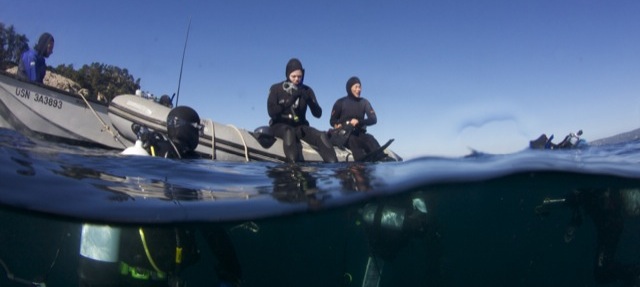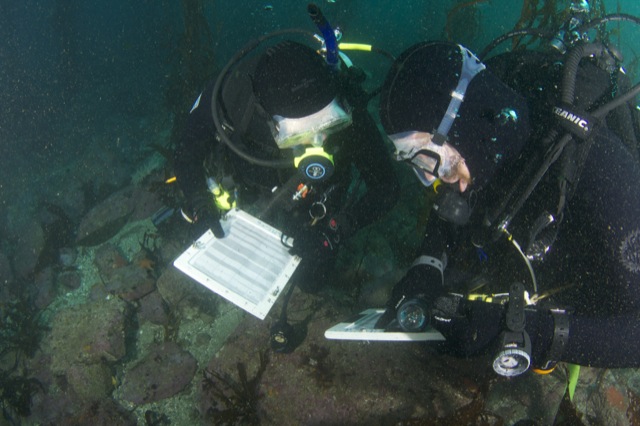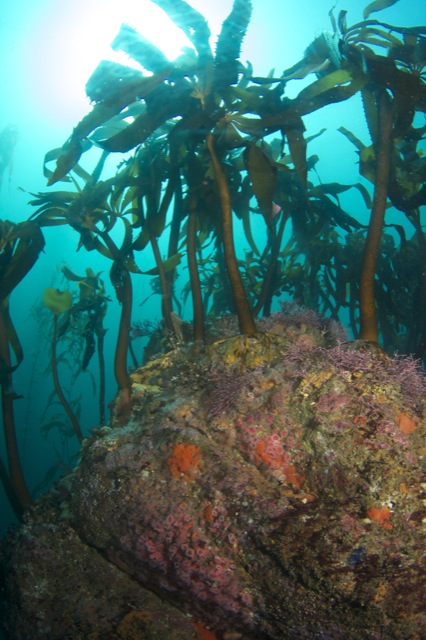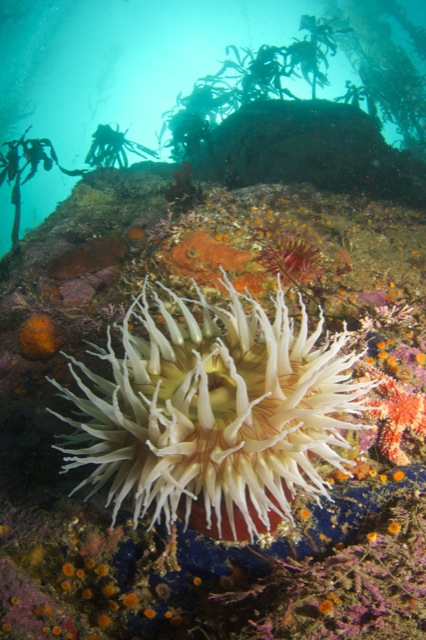By Scott Gabara
Field courses are one of the best parts of attending graduate school at Moss Landing. Class is moved from the classroom or lab to the great outdoors. Getting away from the computer and out into nature helps keep anyone more balanced. We learn ecological concepts and then view or test them in the field to better understand subtidal ecology. This spring, the subtidal ecology class has been out SCUBA diving around Monterey Bay, identifying species and their relationships (ecology).

Identifying organisms in the field can be very difficult if using color, as it changes as you descend through the water column. Red, orange and yellow do not penetrate through the water very far, so we use waterproof flashlights to restore the natural spectrum and hopefully more easily identify organisms.

Comparing data with someone else when learning to identify organisms makes the process much easier. You can quickly learn if you are mis-identifying something and try to find another one to recalibrate yourself. Here are some species you may see around the Southern Monterey Bay area :



